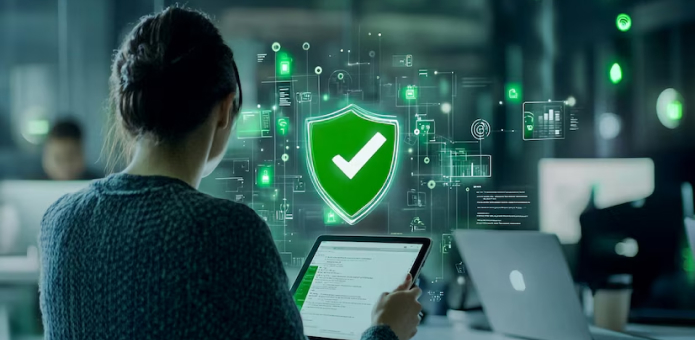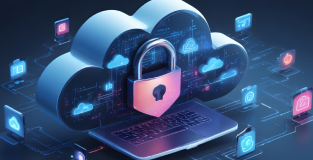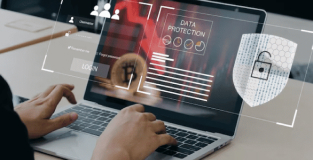Is SOC 2 Compliance really necessary for SaaS companies?
If you're in the SaaS industry, this question should be at the forefront of your mind. As we navigate a world where data breaches and cyber threats are commonplace, ensuring that your company is compliant with SOC 2 standards is not just a good practice – it's a necessity.
Is SOC 2 a Certification or a Report? If that's bugging you, continue reading!
SOC 2 is a report, not a certification. It’s an independent examination report that showcases how an organization meets critical Trust Services Criteria (TSC) and controls, specifically focusing on:
These reports, based on the Auditing Standards Board of the AICPA, evaluate an organization’s information systems to ensure they align with key compliance controls and objectives. Given the hefty costs - in some cases USD $4.45 million - associated with data breaches, implementing SOC 2 can significantly enhance your organization’s security posture and protect against potential threats.
Why SOC 2 Compliance Matters for SaaS Companies
Are your customers genuinely confident in your security practices? As digital transformation accelerates, the scrutiny on SaaS companies is increasing. Customers are not only looking for great products; they want to know their sensitive data is secure. This heightened awareness means that SaaS companies must not only comply with industry standards but actively demonstrate their commitment to security through certifications like SOC 2.
How is SOC 2 helpful for SaaS Companies?
Establishing trust with customers is a critical challenge for SaaS leaders. Once you've developed a product that fits your target audience, the question becomes: Why should customers trust you? Achieving SOC 2 compliance is an effective way to differentiate your business from competitors. It shows you are committed to protecting customer data and privacy.
A SOC 2 report demonstrates that you’re taking industry-standard measures to prevent breaches and have a robust contingency plan in place. This instills confidence in your prospects and reassures them that cybersecurity is a priority for your organization.
Moreover, being SOC 2 compliant opens doors to new customers who prioritize security and prefer vendors with established compliance credentials. It gives you a competitive edge and enhances your business's reputation, even on an international scale.
To cut things short, SOC 2 is significant for SaaS businesses because:
- You can establish trust with your prospects.
- You can address cybersecurity concerns effectively.
- You can tap into new markets and enhance global recognition.
Understanding SOC 2: Type I vs Type II
Before diving into the benefits, it’s important to understand the difference between SOC 2 Type I and Type II reports.The below table provides a clear and concise comparison of SOC 2 Type I and Type II reports, to give you a glimpse of key differences and when each might be applicable.
Steps to Achieve and Maintain SOC 2 Compliance
Achieving and maintaining SOC 2 compliance involves a structured approach that ensures your business meets the standards and sustains these practices over time. Here’s a breakdown of the steps involved in the process:
SOC 2 Compliance Challenges for SaaS Businesses and How to Overcome Them
SaaS companies face unique hurdles on their journey to SOC 2 compliance, driven by the complexities of cloud services, the vast amount of customer data they manage, and the ever-evolving security landscape. Let’s break down these challenges and explore effective solutions to overcome them.
- Managing cloud security is a major challenge due to the complexities of safeguarding customer data across various platforms, with the risk of breaches always present. The solution lies in adopting cloud security best practices, including encryption, multi-factor authentication, continuous monitoring, and vulnerability assessments.
- Monitoring and reporting compliance can feel overwhelming, especially when managing diverse customers and transactions. The solution is to automate tasks like real-time monitoring and automatic report generation while setting alerts for anomalies to keep ahead of potential issues.
- For smaller businesses, SOC 2 compliance can be resource-intensive. The solution is to start with a gap analysis, use cost-effective automation, and consider hiring consultants on a project basis to mitigate strain.
- Vendor management with third-party reliance can be challenging. The solution lies in establishing strong vendor policies, requiring certifications, and conducting regular audits for accountability.
- As businesses grow, maintaining SOC 2 compliance becomes more complex. The solution for this is adopting a scalable framework and providing continuous training to ensure compliance evolves with the business and integrates into its culture.
In today’s digital-first economy, SOC 2 compliance isn’t just a box to check; it’s a strategic imperative for SaaS companies looking to build lasting trust with customers. By adhering to the Trust Services Criteria, you not only safeguard sensitive data from unauthorized access but also showcase your commitment to high operational standards. Remember, data breaches can lead to severe financial and reputational damage. Prioritizing SOC 2 compliance is an investment in your organization's future and a cornerstone of sustainable customer relationships.
How prepared is your team to tackle the demands of SOC 2 compliance?






Your email address will not be published. Required fields are marked *